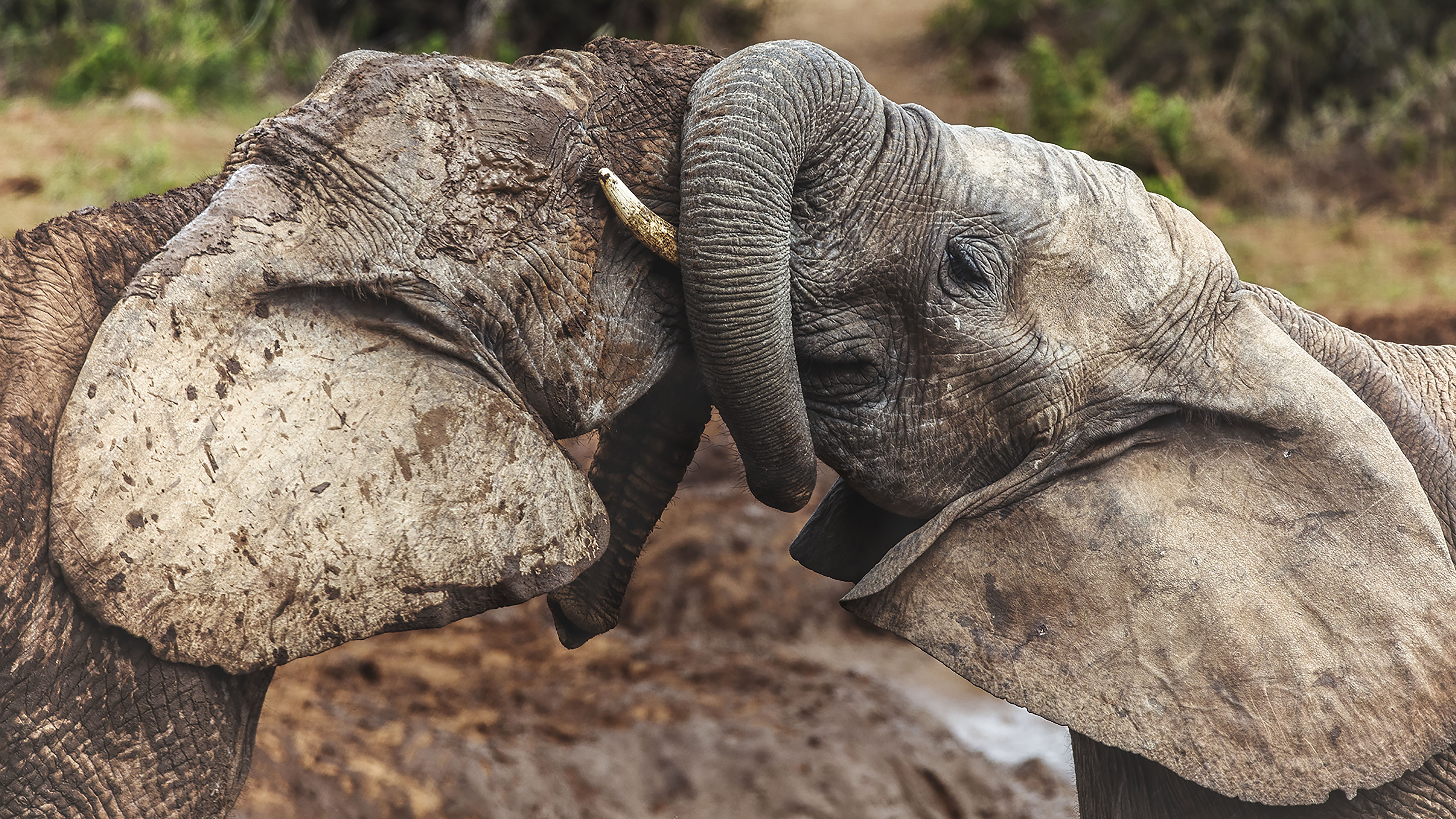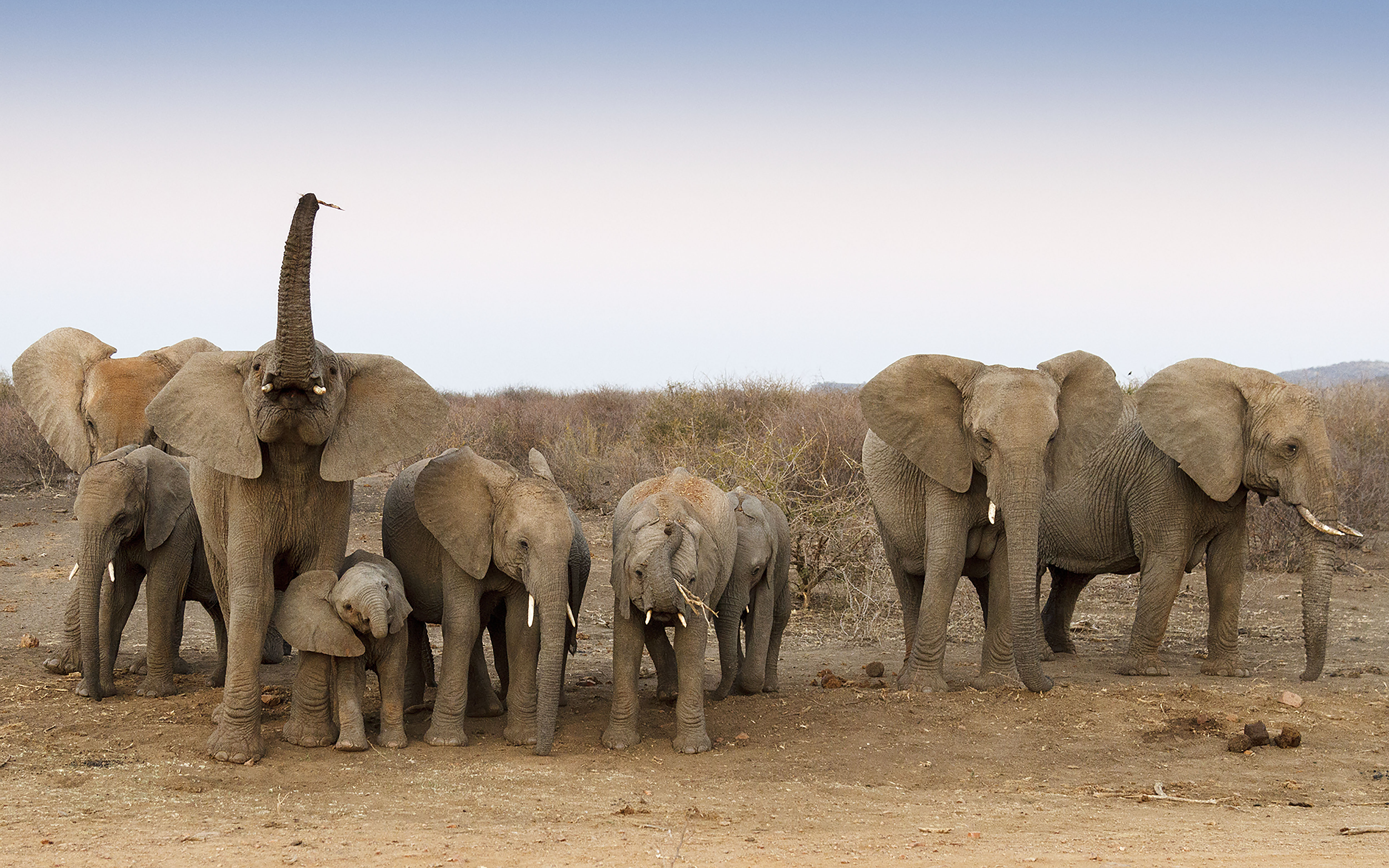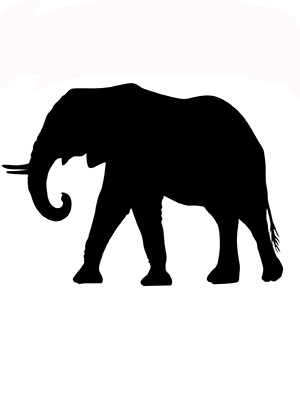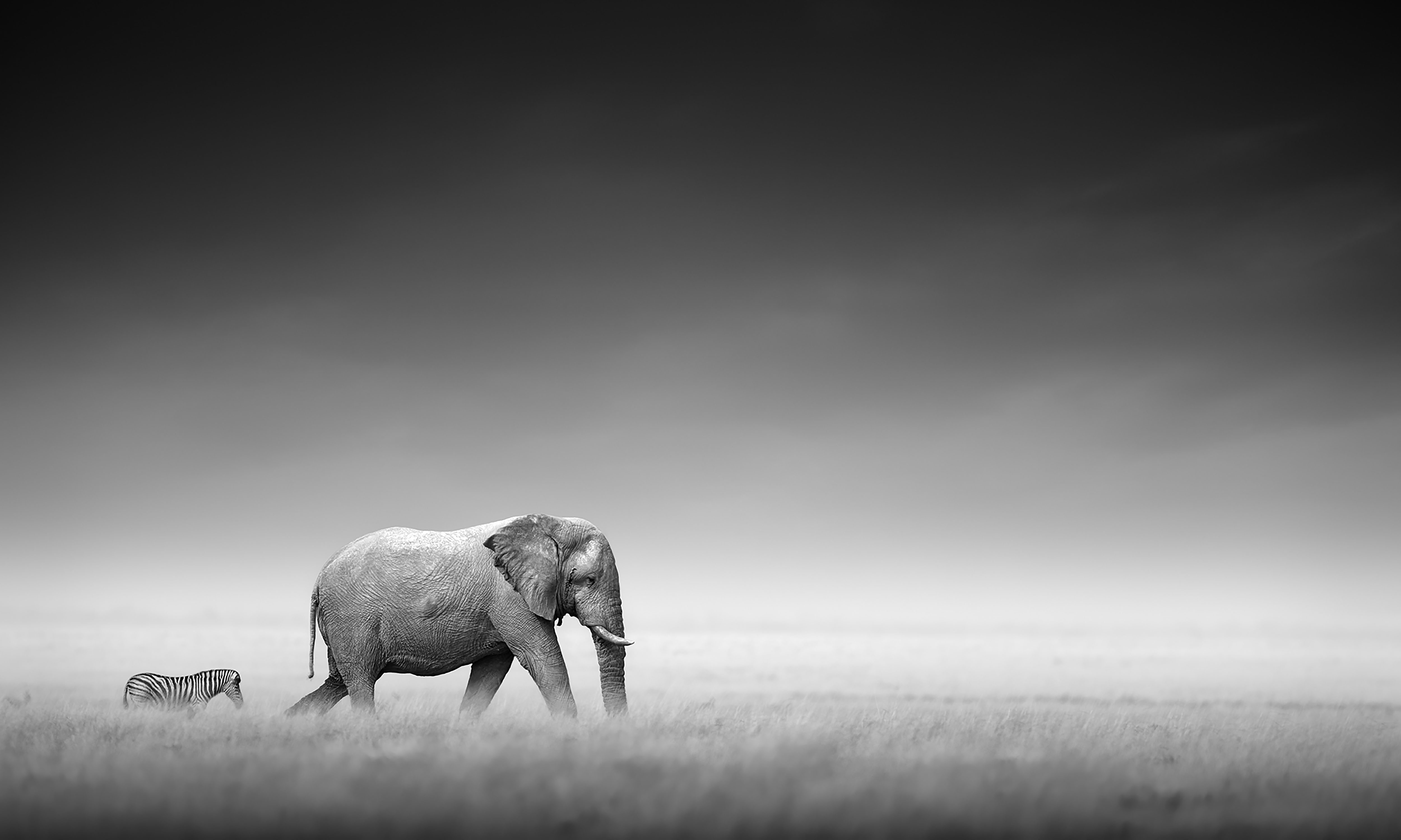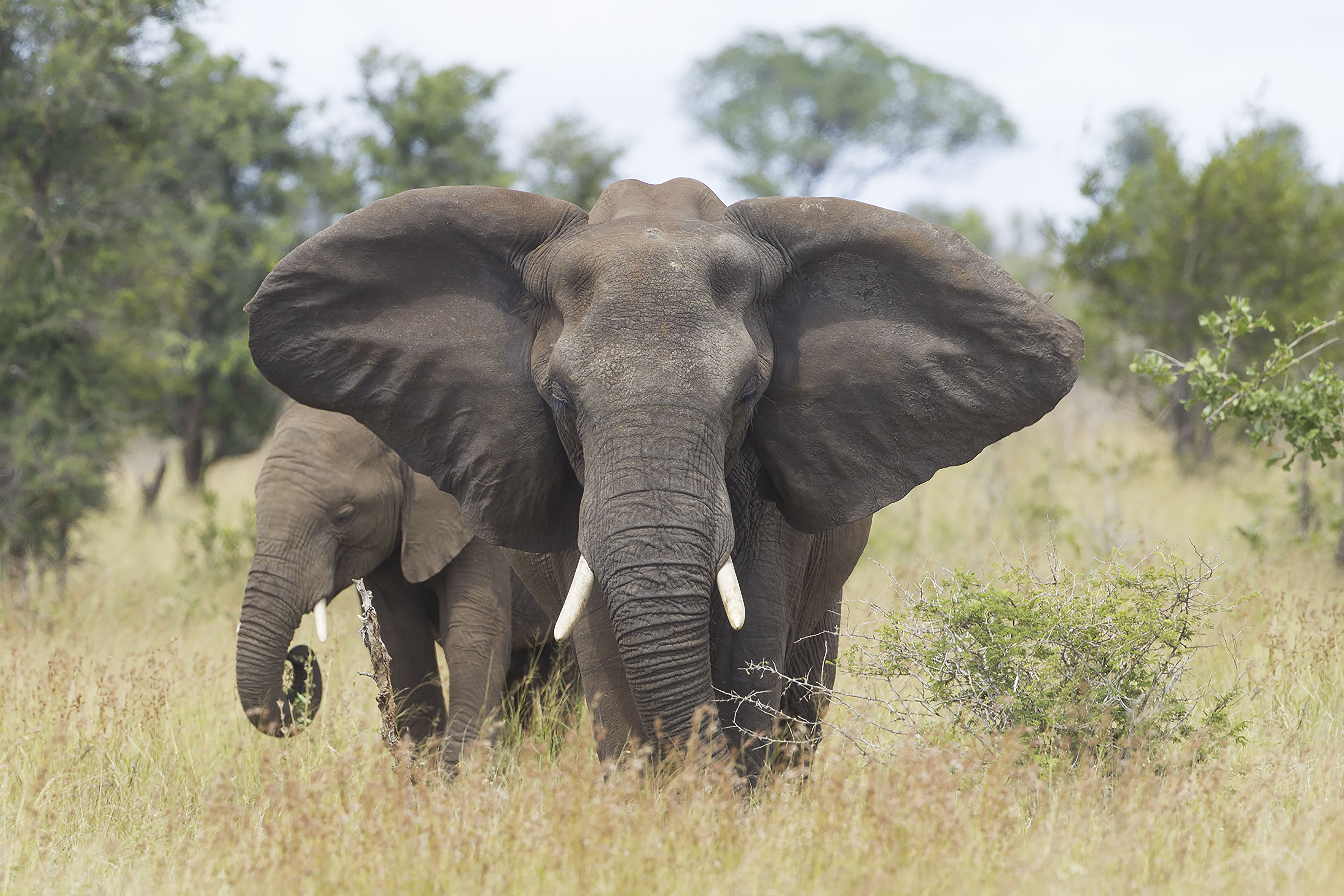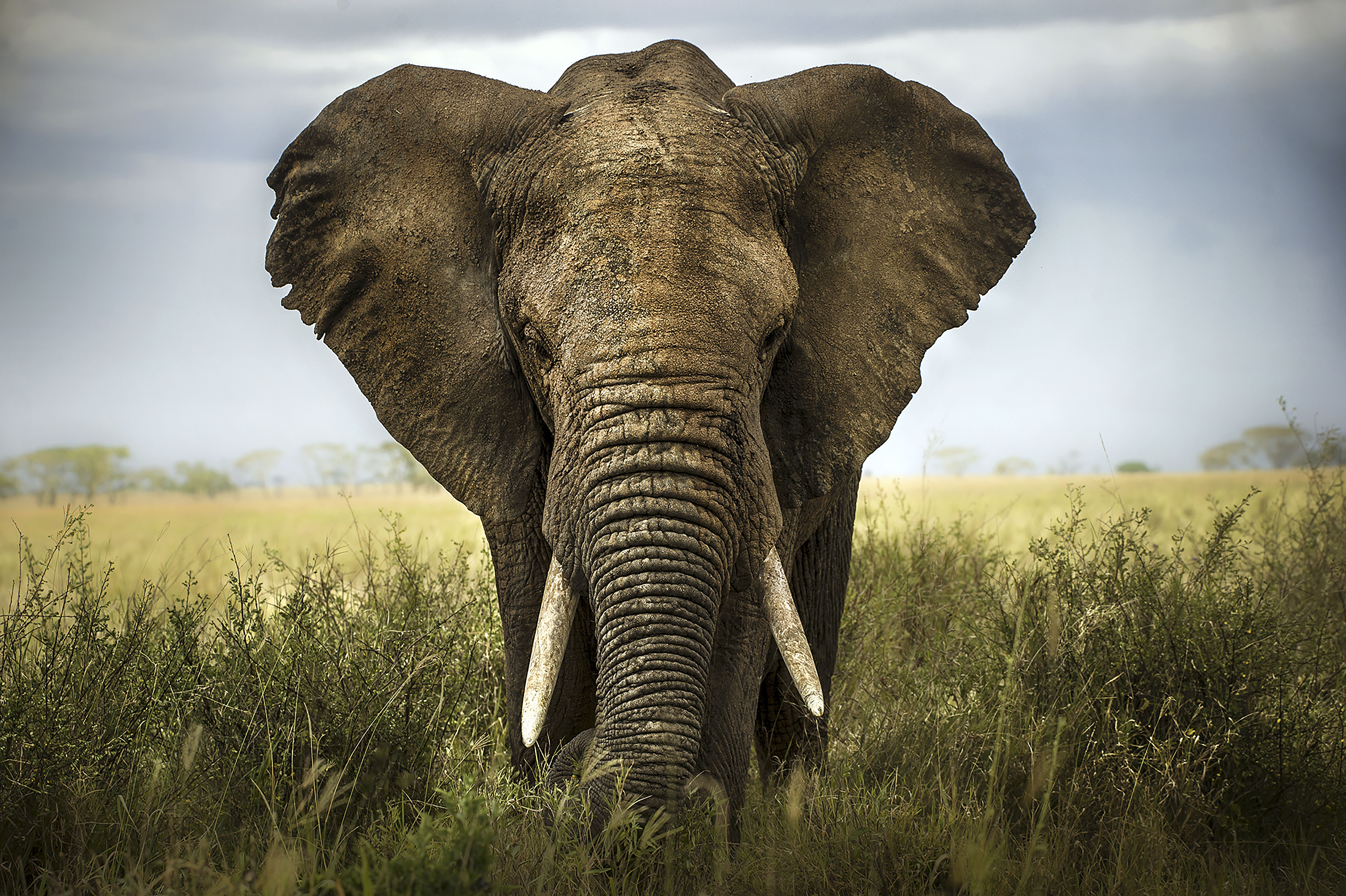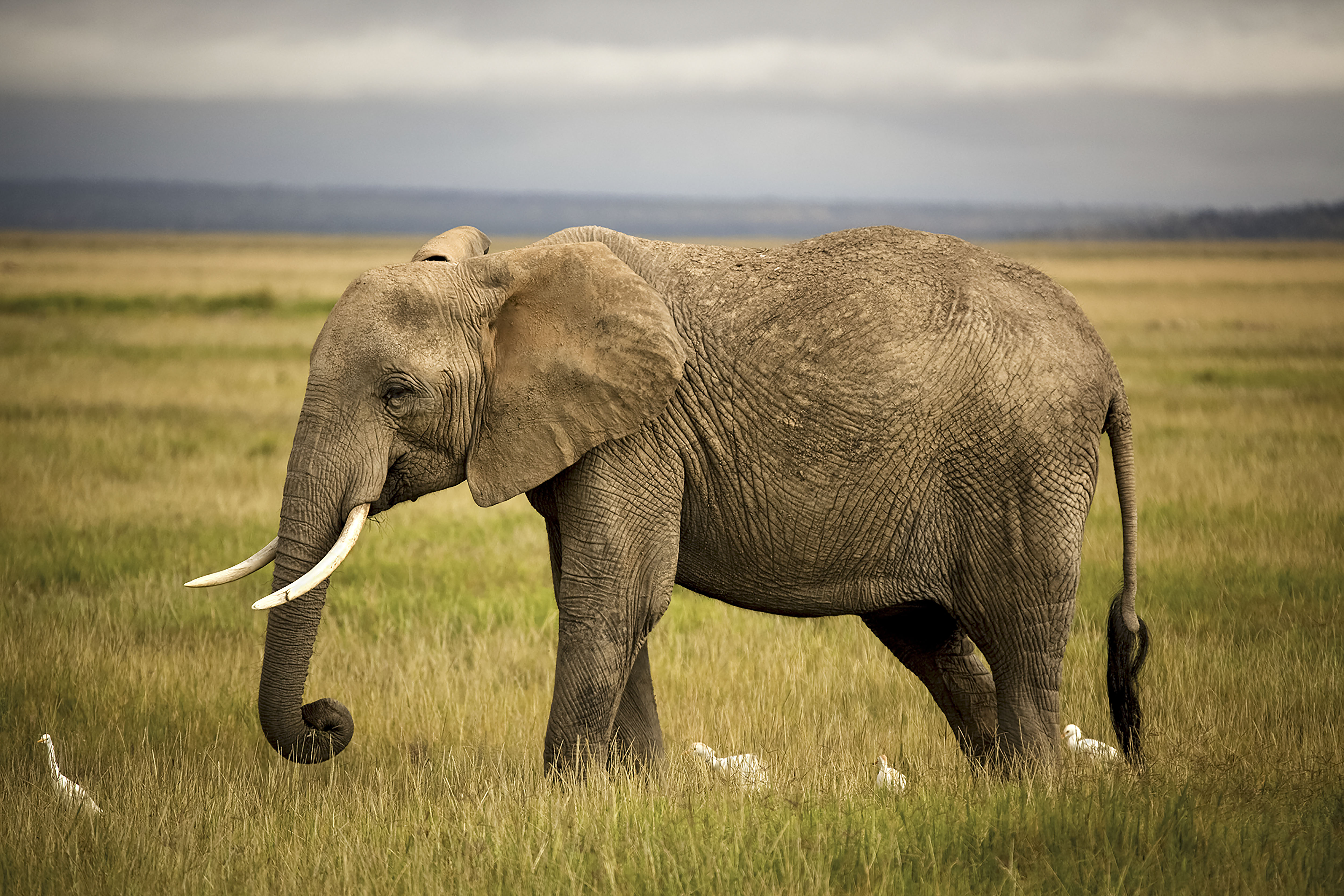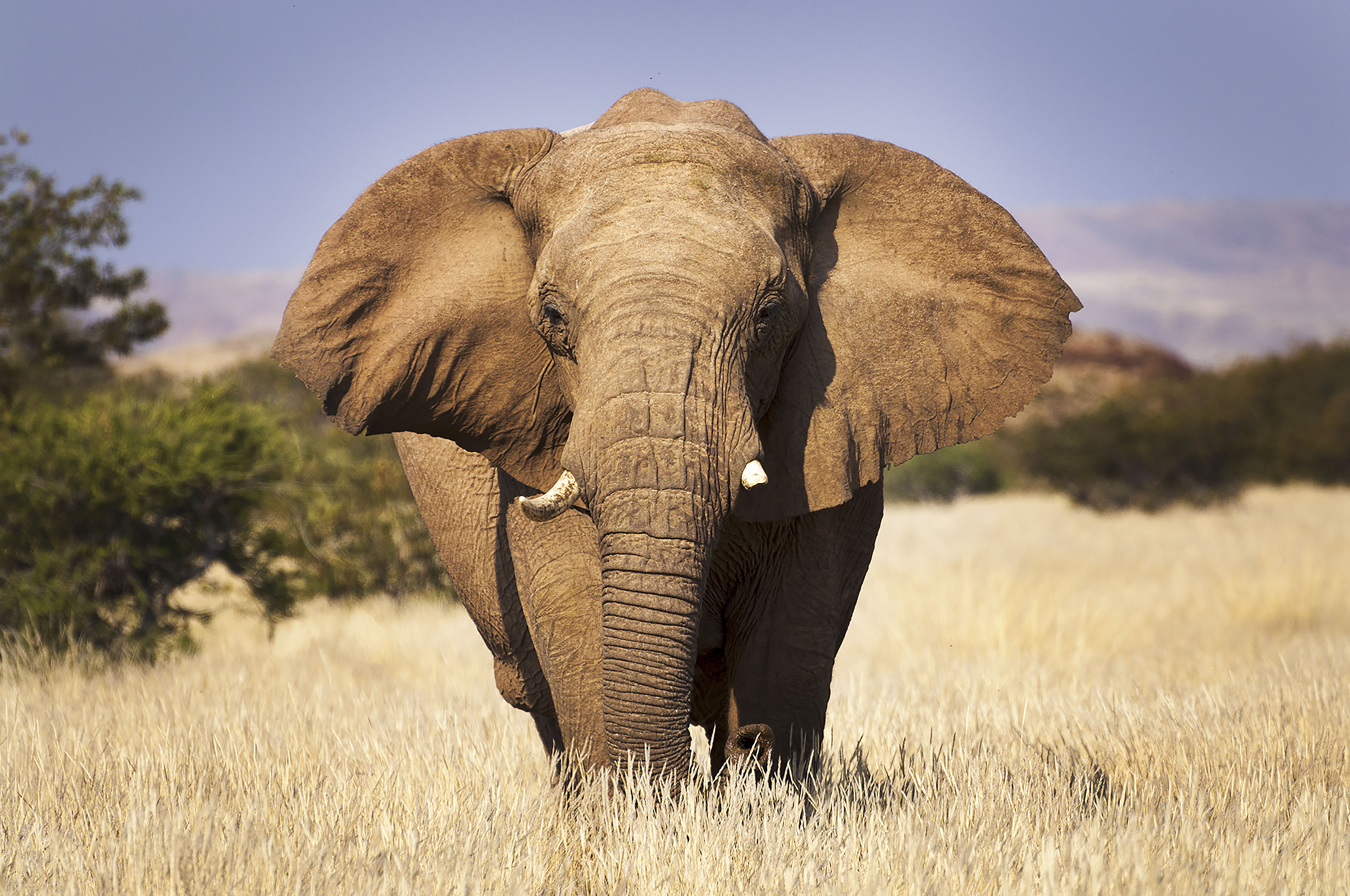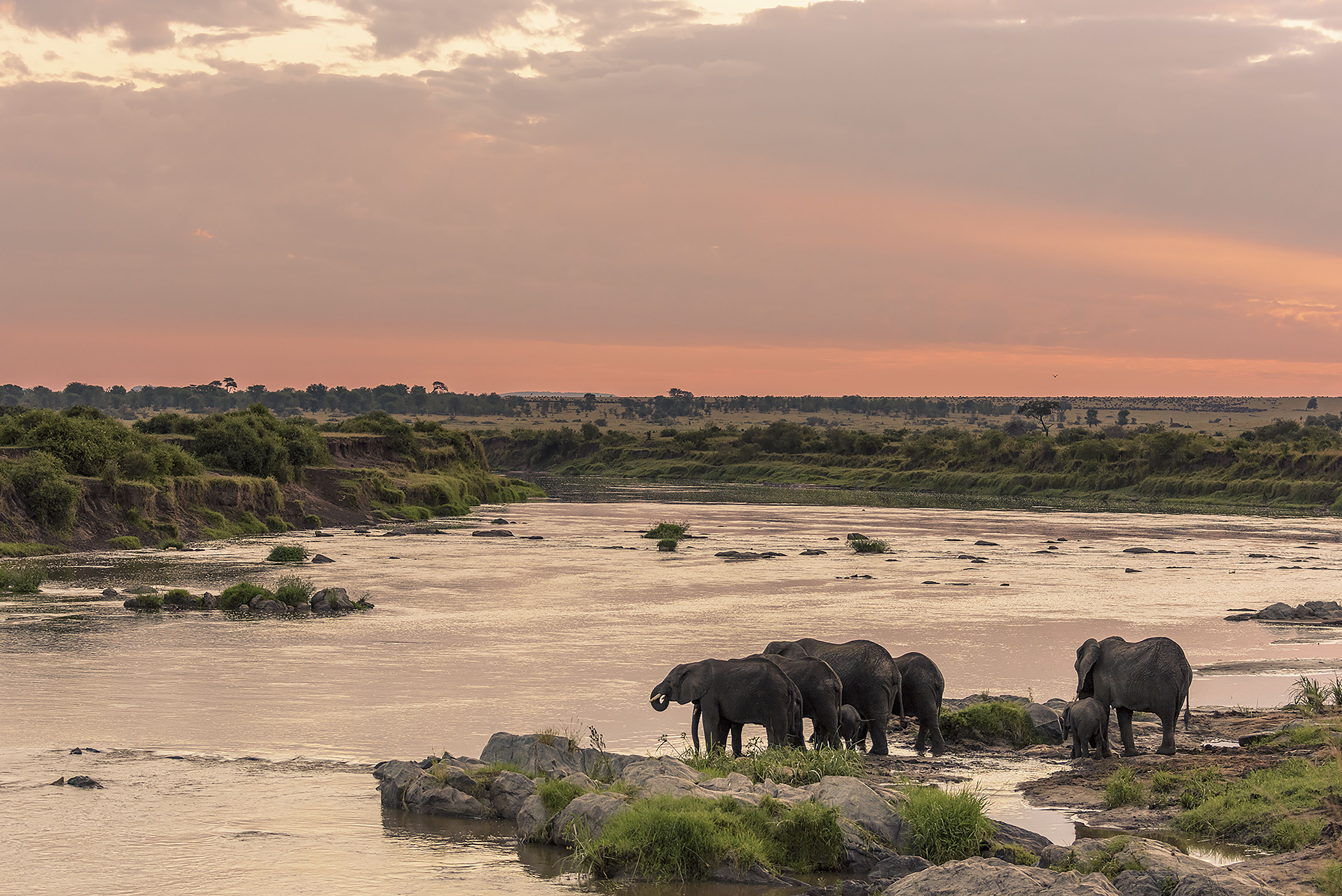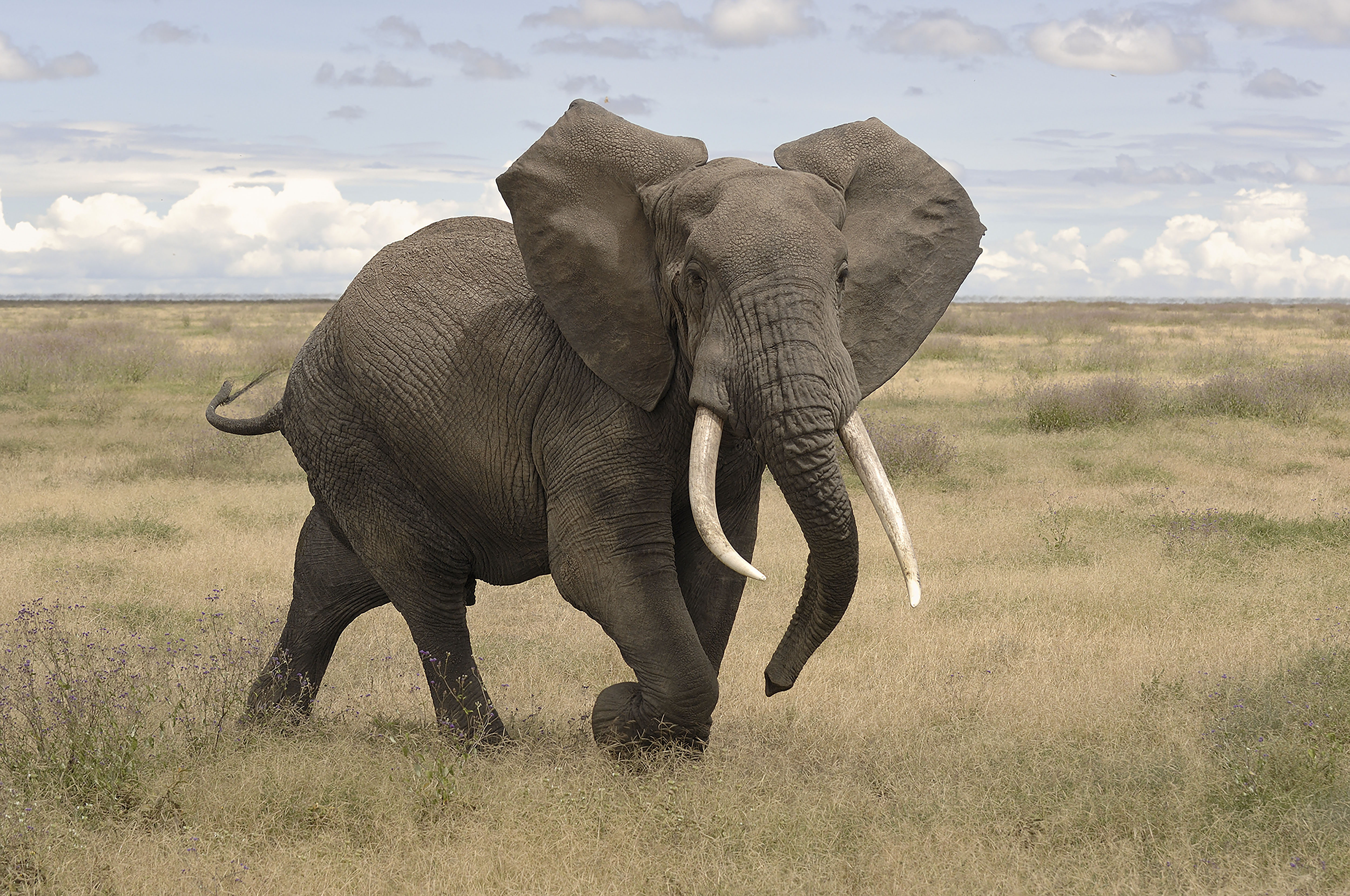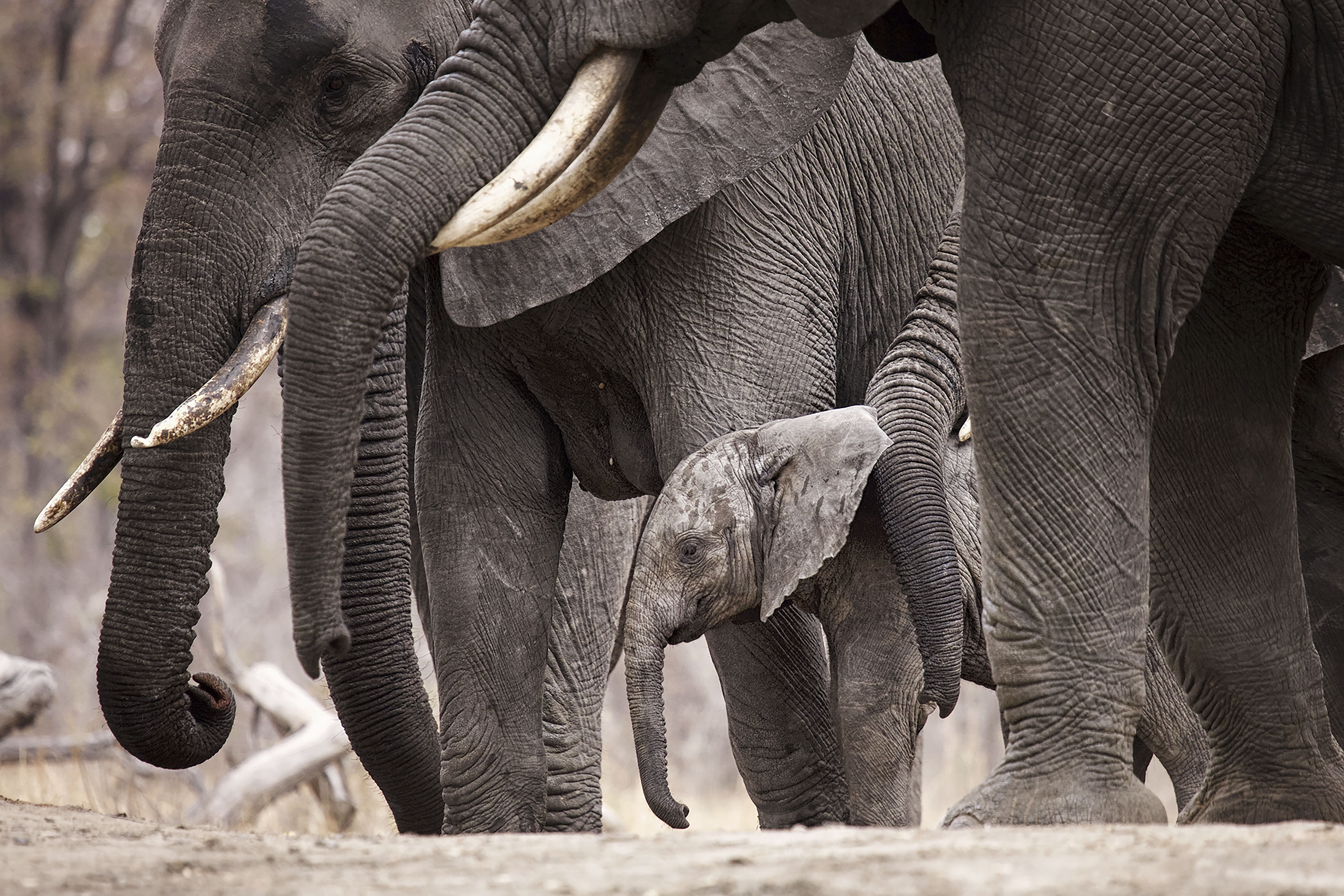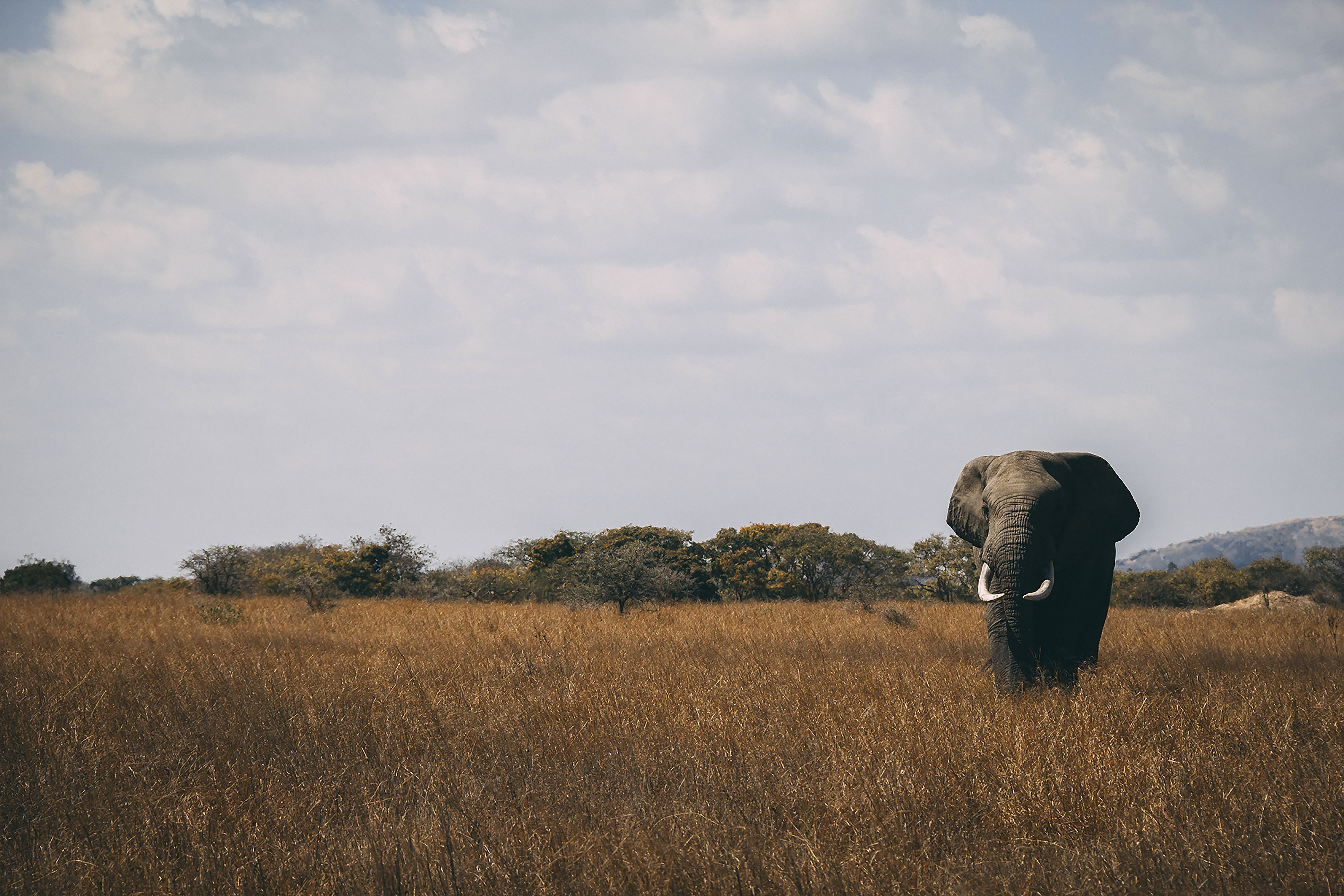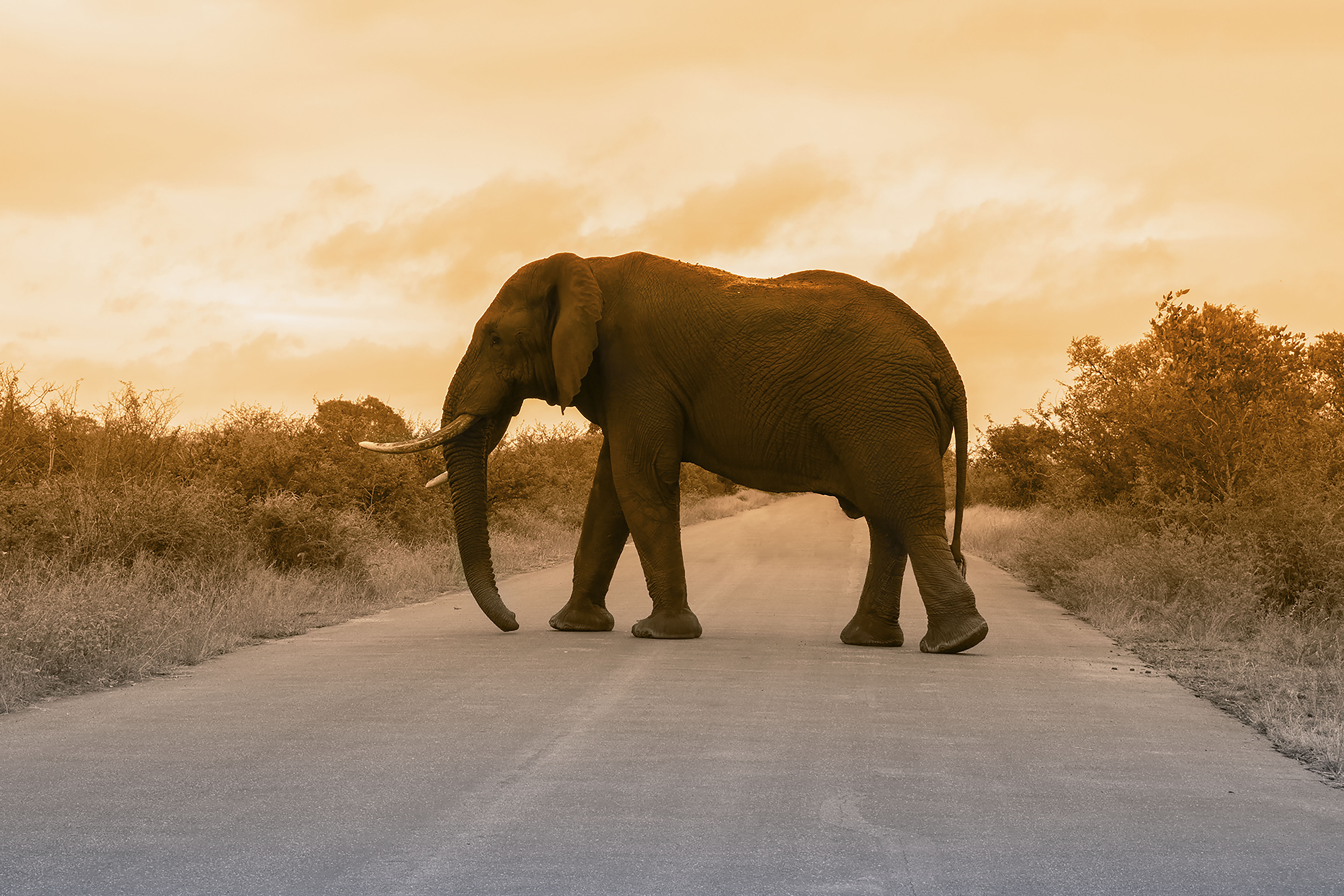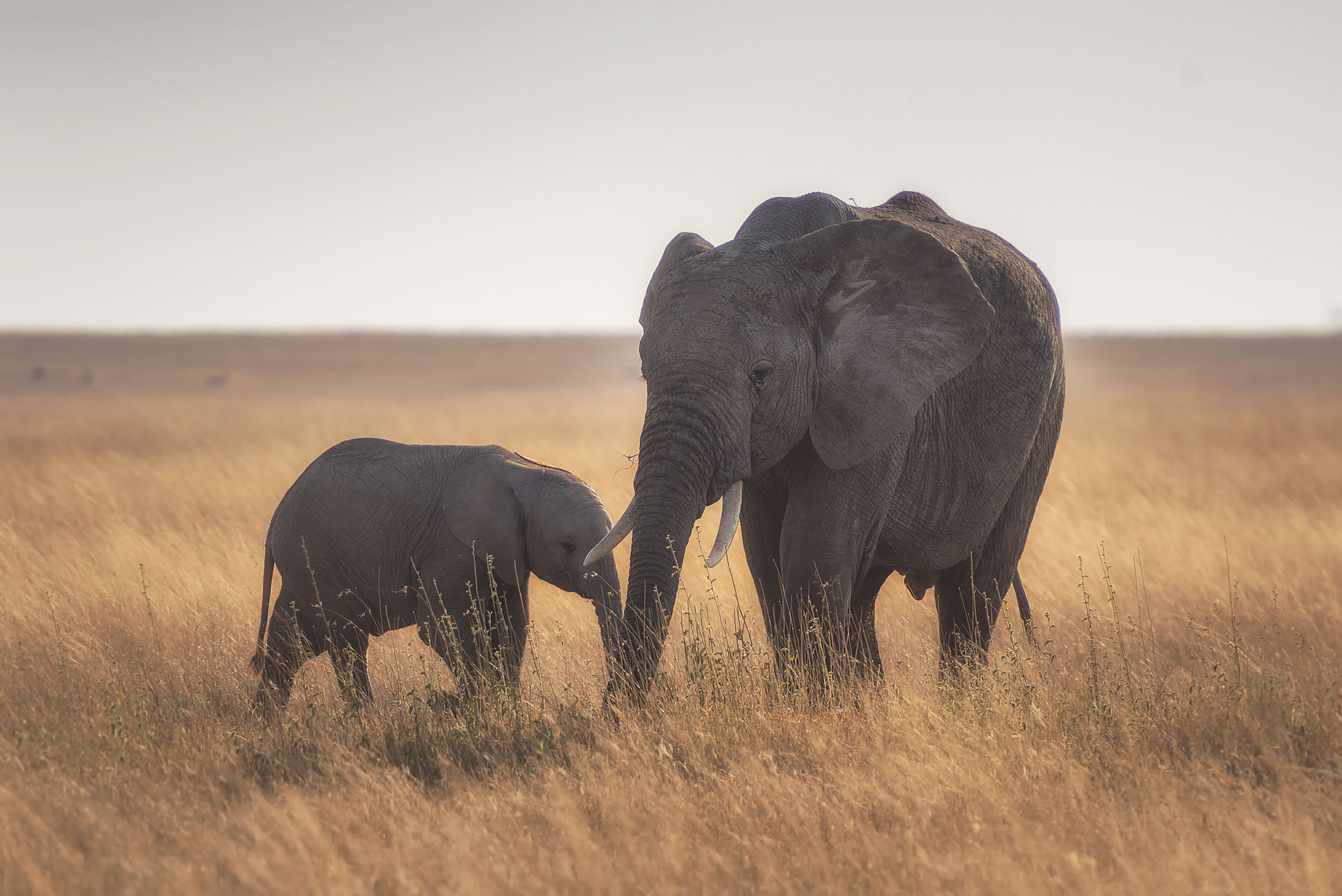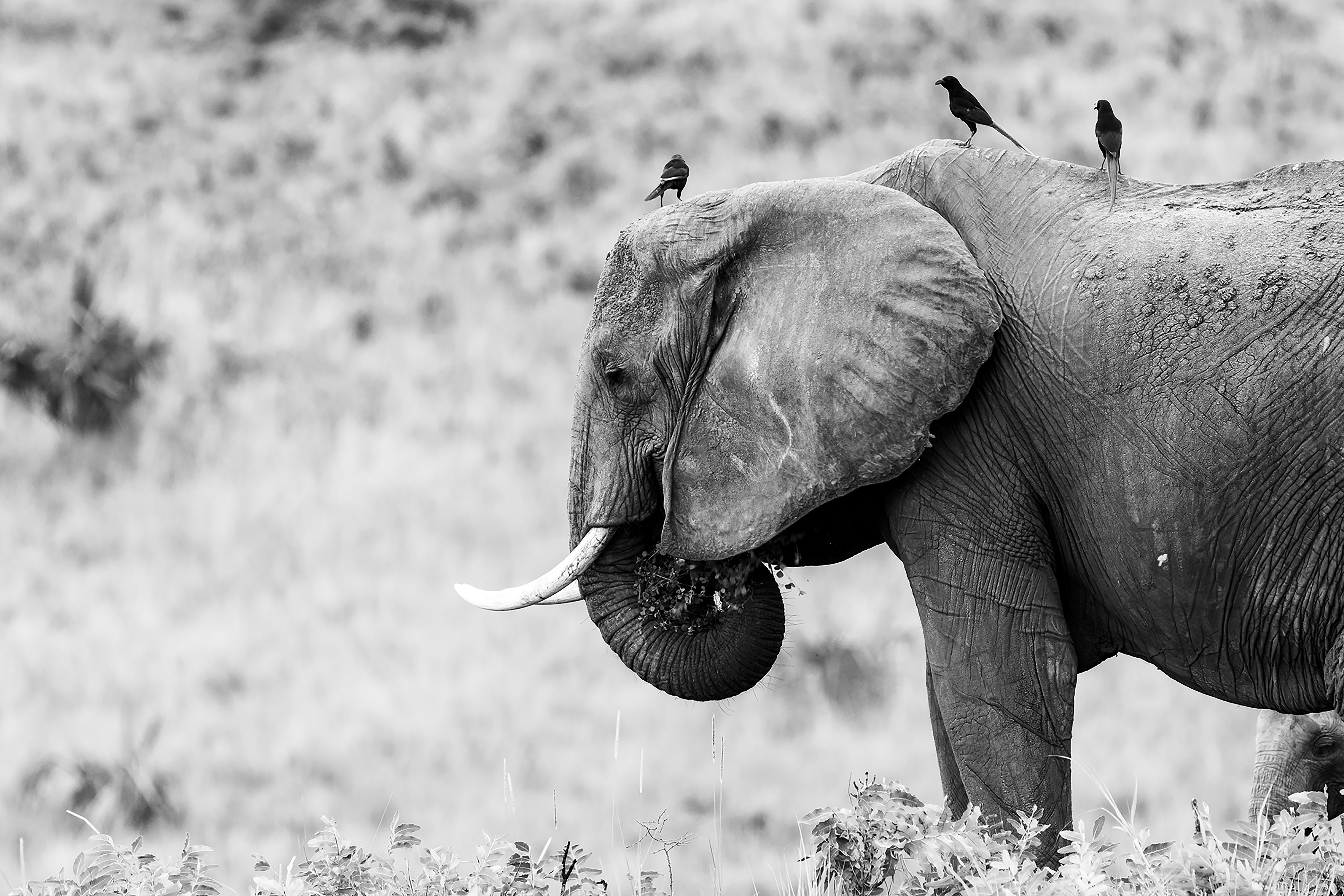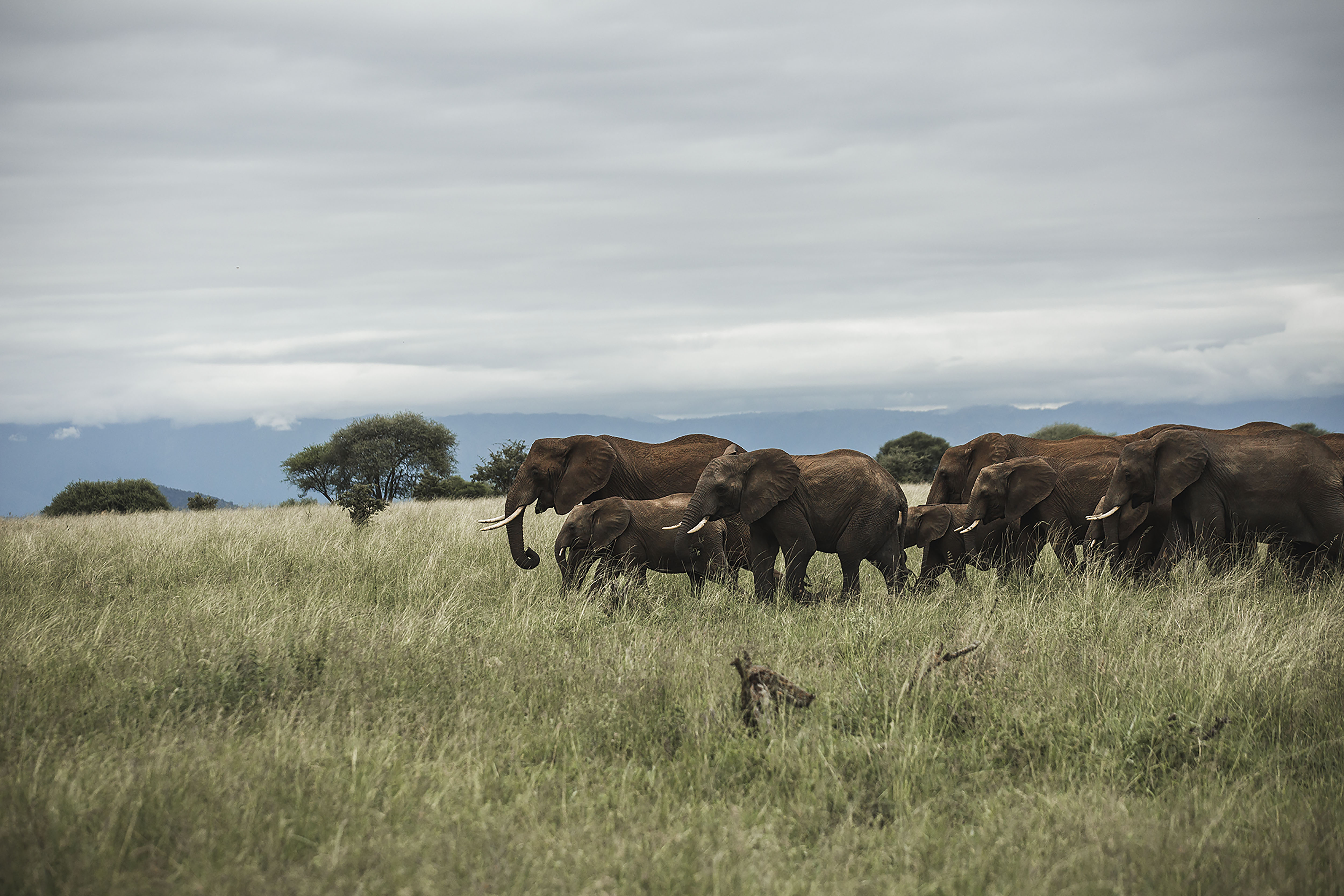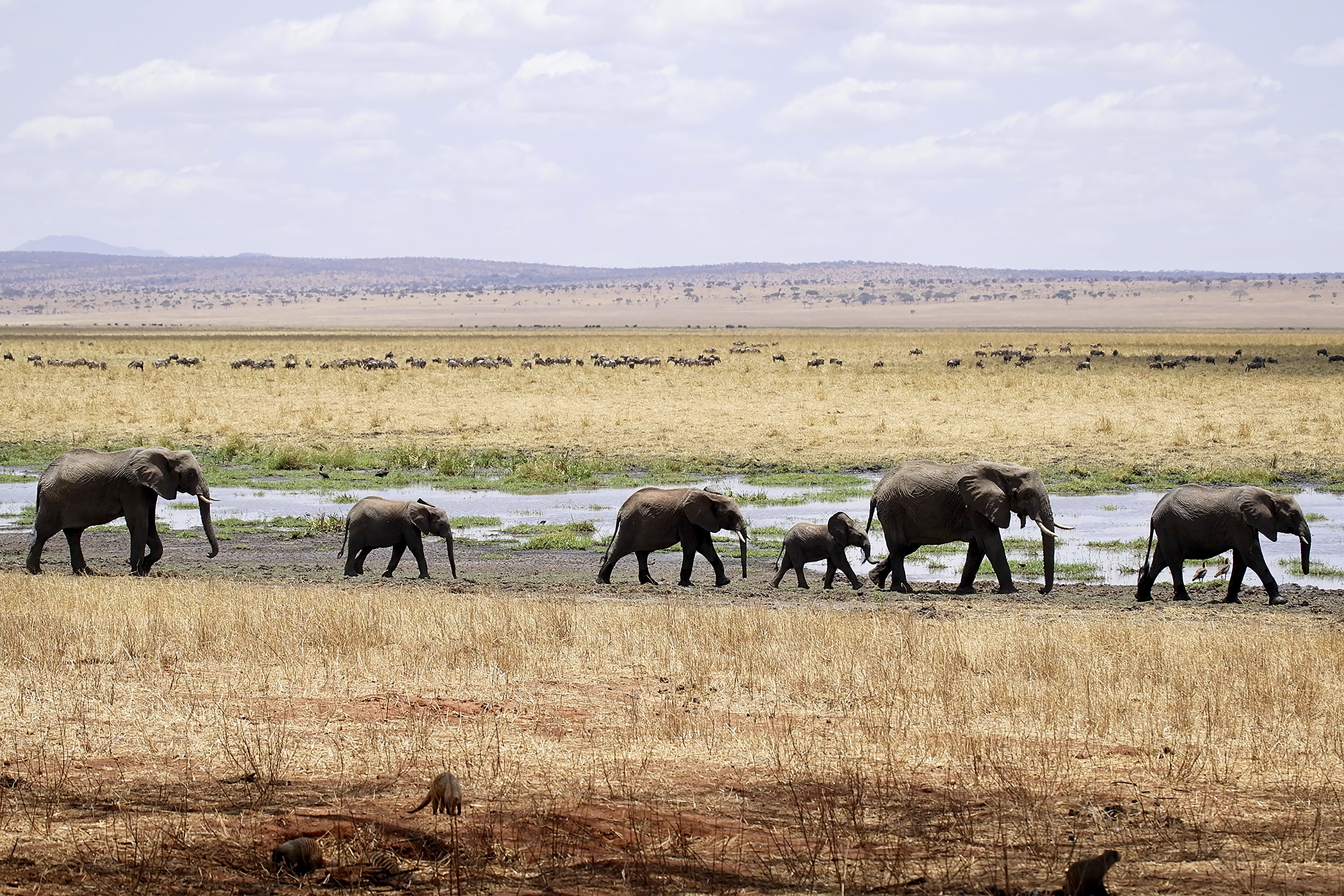African Elephant
(Loxodonta africana)
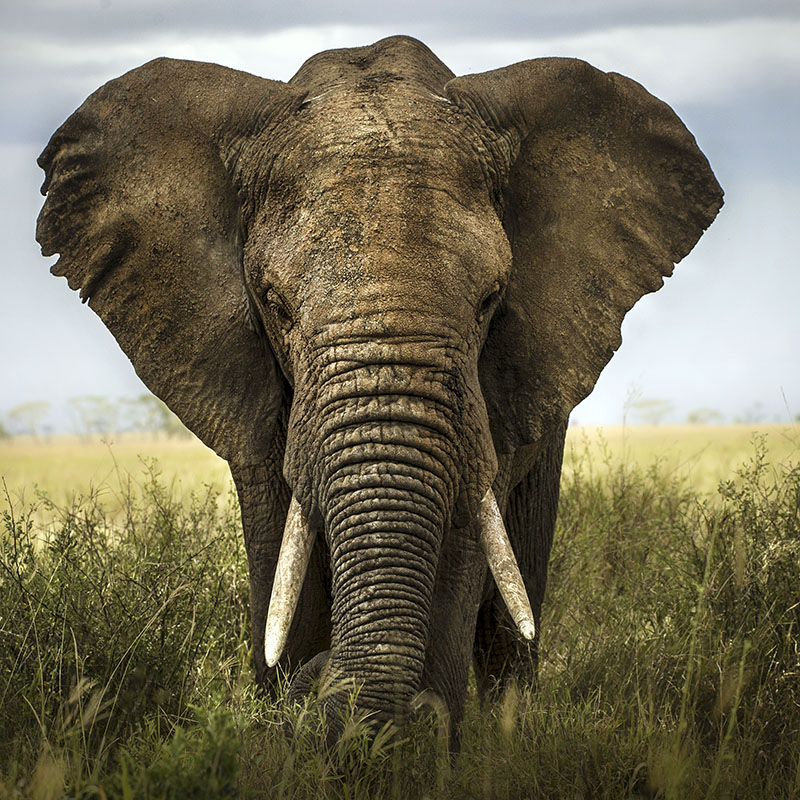
East Africa Acacia Savannas
STATISTICS
Height up to
4 meters
Length up to
7 meters
Weight up to
6100 kgs
Lifespan
70 years
Powerful - Nomadic - Social - Communicates Over Long Distances
The African Bush elephant is the largest of the two African elephants and the largest species on Earth. It is an incredibly social species traveling in large herds of mostly females and juveniles of up to 70 individuals. Males leave the herd in adolescence and form bachelor herds of other males of similar ages while mature males travel alone.
The herd is lead by the oldest female, the matriarch. The matriarch decides the route and leads the herd to all the water holes she knows so they can memorize them for the future. The African Elephant is distinguished from its counterparts by its concave back and stocky physique. Its trunk is made up of 40,000 muscles which it uses to lift heavy objects as well as strip leaves, break branches, consume water and bathe. Without its trunk, the African Elephant would have great difficulty eating, drinking, and bathing.
This species consumes approximately 50 gallons of water per day. The African Bush Elephant varies its diet according to its habitat and eats on average 225 kg of plant matter per day which it only partly digests before defecation. This, in combination with the large distances it walks, contributes to seed dispersal for various tree and plant species.
Its large ears create air currents that cool the blood vessels in its ears thereby cooling the rest of its body. It also has exceptionally long tusks which are used for digging, fighting, and marking territory. It can communicate through body posture and it is believed to pick up vibrations through its feet. Over long distances, it can communicate using vocalizations that humans cannot hear.
BIODIVERSITY BENEFIT
Seed Dispersal - Ecosystem Engineer
THREATS
Habitat Loss
Infrastructure development, agriculture and roads.
Hunting and Poaching
Elephants are hunted and poached for their ivory tusks.
PROTECT THE WILDARK 100
